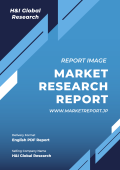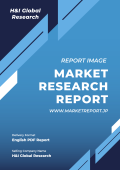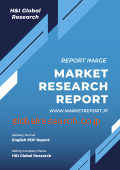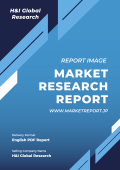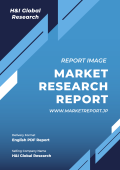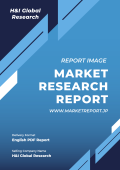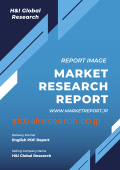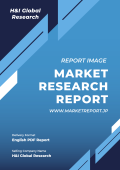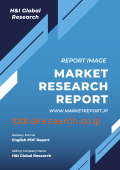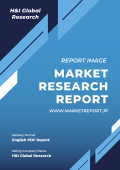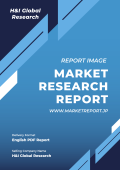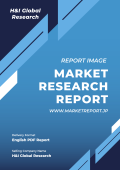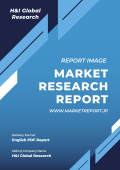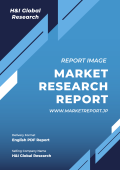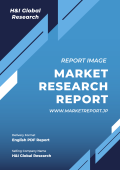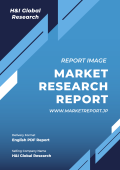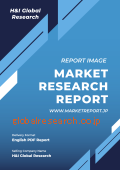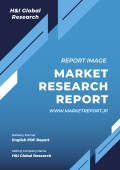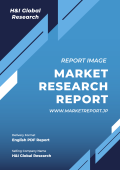| ■ 英語タイトル:Precision Agriculture Market Report by Technology (GNSS/GPS Systems, GIS, Remote Sensing, Variable Rate Technology (VRT), and Others), Type (Automation and Control Systems, Sensing and Monitoring Devices, Farm Management Systems), Component (Hardware, Software), Application (Mapping, Crop Scouting, Yield Monitoring, Soil Monitoring, Precision Irrigation, and Others), and Region 2025-2033
|
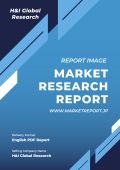 | ■ 発行会社/調査会社:IMARC
■ 商品コード:IMA25FR0236
■ 発行日:2025年1月
■ 調査対象地域:グローバル
■ 産業分野:農業
■ ページ数:129
■ レポート言語:英語
■ レポート形式:PDF
■ 納品方式:Eメール
|
■ 販売価格オプション
(消費税別)
※販売価格オプションの説明はこちらで、ご購入に関する詳細案内はご利用ガイドでご確認いただけます。
※お支払金額は「換算金額(日本円)+消費税+配送料(Eメール納品は無料)」です。
※Eメールによる納品の場合、通常ご注文当日~2日以内に納品致します。
※レポート納品後、納品日+5日以内に請求書を発行・送付致します。(請求書発行日より2ヶ月以内の銀行振込条件、カード払いも可能)
※IMARC社の概要及び新刊レポートはこちらでご確認いただけます。
| ★グローバルリサーチ資料[精密農業の世界市場(2025-2033):GNSS/GPSシステム、GIS、リモートセンシング、可変速度技術(VRT)、その他]についてメールでお問い合わせはこちら
|
*** レポート概要(サマリー)***
世界の精密農業市場規模は2024年に93億米ドルに達しました。IMARC Groupは、2033年までに市場規模が215億米ドルに達し、2025年から2033年の年間平均成長率(CAGR)は9.66%になると予測しています。持続可能な農業慣行の採用に対する注目が高まっていること、生活習慣病の予防に新鮮な野菜の消費量が増加していること、農業慣行の改善に全地球測位システム(GPS)技術の統合が進んでいることなどから、市場は着実な成長を遂げています。
精密農業市場分析:
市場成長と規模: 食糧安全保障の必要性と持続可能な農業慣行の採用が増加していることを背景に、精密農業市場は力強い成長を遂げています。
主な市場推進要因:主な推進要因としては、センサー、全地球測位システム(GPS)、データ分析における技術進歩、世界人口の増加、環境への懸念の高まりと持続可能性の目標の増加などが挙げられます。
技術的進歩:センサー、GPSシステム、ドローン、データ分析における急速な技術的進歩により、農家は作物管理についてより多くの情報を得た上で意思決定を行うことができるようになりました。
産業用アプリケーション:精密農業は、マッピング、作物の偵察、収穫量のモニタリング、土壌モニタリング、精密灌漑など、さまざまな分野で応用されており、それぞれが農業の最適化に貢献しています。
主な市場動向:主な傾向としては、人工知能(AI)、機械学習(ML)、ビッグデータ分析の統合、および機器とソフトウェアプラットフォーム間のシームレスな通信のための接続性の強化が挙げられます。
地理的傾向:アジア太平洋地域では精密農業の採用が増加しているため、同地域が市場シェアをリードしています。しかし、持続可能な農業方法の利用に注目が集まっていることを受け、北米が急成長市場として台頭しています。
競合状況:精密農業市場の主要企業は研究開発(R&D)に投資し、製品ポートフォリオの拡大に重点的に取り組み、AIやMLなどの先進技術の統合を進めています。
課題と機会:課題としては、初期投資コストの高さ、データプライバシーの懸念、農家への教育やトレーニングの必要性などが挙げられます。しかし、新興市場における精密農業の採用拡大や、資源の最適化と持続可能な農業のための革新的なソリューションの開発といった機会が、これらの課題を克服することが予測されています。
精密農業の市場動向:
技術の進歩
精密農業は、主に農業分野における著しい技術の進歩によって変革期を迎えています。センサー、GPS(全地球測位システム)技術、無人航空機(UAV)またはドローン、そして高度なデータ分析における技術革新は、農業の慣行に革命をもたらしています。こうした進歩により、農家は業務を最適化するためのさまざまなツールやデータソースを利用できるようになっています。高度なセンサーは土壌の水分量、温度、栄養素レベルに関するデータを収集し、農家は灌漑や施肥に関してデータに基づく決定を行うことができます。 GPSシステムは、作物を最適な深さに植え、完熟のピーク時に収穫できるよう、精密な植え付けと収穫を可能にします。 カメラとマルチスペクトルセンサーを搭載したドローンは、空中画像を提供し、農家が作物のストレス、病気、害虫を早期に発見するのに役立ちます。これらのテクノロジーによって生成される膨大なデータを処理し解釈する上で、データ分析は重要な役割を果たします。 農家は、過去のデータ、気象パターン、リアルタイムの情報を分析し、いつ、どのように作物を植え、灌漑を行い、肥料や農薬を散布するかを、より適切な方法で選択することができます。 このような精密さによって、農作物の収穫量が増えるだけでなく、資源の無駄遣いが減り、農業の持続可能性が高まります。
高まる食糧安全保障の必要性
世界的な食糧安全保障の必要性が高まっていることが、市場の成長を後押ししています。世界中で人口が増加する中、十分な食糧供給を確保するために農業生産性の向上が求められています。この課題に対処する上で、精密農業は重要な役割を果たします。農業慣行を最適化し、資源管理を改善することで、農家はより少ない資源でより多くの食糧を生産することが可能になります。これには、灌漑、施肥、害虫駆除の精密な管理が含まれ、その結果、収穫量の増加と廃棄物の削減につながります。各国の政府機関や国際機関は食糧安全保障の重要性を認識しており、持続可能な農業の実践を積極的に推進しています。 精密農業は、生産性を向上させるだけでなく、農業が環境に与える影響を最小限に抑えるものであり、これらの目標に完全に一致しています。 そのため、世界中の政策立案者や農業関係者にとって魅力的な選択肢となっています。 さらに、精密農業は、地域や地方での食糧生産を強化し、長距離のサプライチェーンへの依存を減らし、危機的な状況における回復力を高めることで、解決策を提供します。
環境への懸念と持続可能性
環境への懸念と持続可能性 環境への懸念の高まりと持続可能な農業の実践の緊急性により、精密農業が注目を集めています。 従来の農業手法は、肥料や農薬の過剰使用、過剰な水消費、土壌の劣化と関連付けられることがよくあります。 精密農業は、効率的で環境にやさしい農業を推進することで、これらの問題に対処します。精密農業の主要な原則のひとつは、資源の無駄遣いを最小限に抑えることです。 センサー、GPS、データ分析などの先進技術を活用することで、農家は作物の特定のニーズに合わせて、水、肥料、農薬などの投入物を正確に調整することができます。 この的を絞ったアプローチは、収穫量を増やすだけでなく、地下水の汚染や土壌浸食などの環境への影響を低減します。 さらに、精密農業は自然生息地の保全と生物多様性の維持にも貢献します。さらに、化学薬品の使用を削減し、土地利用を最適化することで、生態系の破壊を最小限に抑え、農業と環境のより健全なバランスを促進します。
精密農業 産業用セグメント:
IMARC Groupは、市場の各セグメントにおける主要なトレンドの分析と、2025年から2033年までの世界および地域レベルでの予測を提供しています。当社のレポートでは、技術、種類、コンポーネント、用途に基づいて市場を分類しています。
技術別内訳:
GNSS/GPSシステム
GIS
リモートセンシング
可変レート技術(VRT
その他
GNSS/GPSシステムが市場シェアの大半を占める
本レポートでは、技術別に市場の詳細な内訳と分析を提供しています。これには、GNSS/GPSシステム、GIS、リモートセンシング、可変レート技術(VRT)、その他が含まれます。レポートによると、GNSS/GPSシステムが最大のセグメントを占めています。
全地球測位衛星システム(GNSS)/全地球測位システム(GPS)は、農機具の正確なマッピングと追跡を可能にし、農家が畑内の正確な位置を把握できるようにします。GPS誘導式のトラクターや機器は、まっすぐで均一な列、投入物の効率的な利用、重複の削減を可能にし、結果としてコスト削減と生産性の向上につながります。 GPSシステムの普及により、農家は詳細な畑の地図を作成し、可変率適用を管理し、機械の性能をリアルタイムで監視することが可能になり、これらはすべて、農業経営の改善と収穫量の増加に貢献します。
地理情報システム(GIS)は、農家が畑に関する空間データを収集、保存、分析することを可能にするため、精密農業に不可欠です。GIS技術は、土壌の種類、地形、過去の収穫量データなどの情報を組み込み、農場の正確なデジタル地図を作成するのに役立ちます。このデータは、特定の土壌欠乏地域を特定したり、水管理を最適化するための排水システムの計画を立てるなど、正確な意思決定を行うために使用できます。
リモートセンシングでは、衛星、無人機、航空機を使用して作物の状態に関する高解像度の画像やデータを取得します。この技術により、害虫の蔓延や栄養素の欠乏などの問題を早期に特定し、作物の健康状態に関する貴重な洞察が得られます。リモートセンシングデータを分析することで、農家は適時に介入することができ、広範囲にわたる処置の必要性を減らし、環境への影響を最小限に抑えることができます。
可変レート技術(VRT)は、農家が畑全体で肥料、農薬、灌漑用水などの投入量を可変的に適用することを可能にします。この技術は、特に資源利用の最適化、無駄の削減、収穫量の最大化に役立ちます。VRTは、GPS、GIS、リモートセンシングからのデータに依存し、畑内の異なる地域の特定のニーズに基づいて投入物の正確な適用を導く処方マップを作成します。
種類別内訳:
自動化および制御システム
センシングおよびモニタリング装置
農場管理システム
産業用オートメーションおよび制御システムが最大のシェアを占める
市場を種類別に詳細に分類・分析した結果も報告書に記載されています。これには、オートメーションおよび制御システム、センシングおよびモニタリング装置、農場管理システムが含まれます。報告書によると、オートメーションおよび制御システムが最大の市場シェアを占めています。
自動化および制御システムは精密農業の要であり、農作業の合理化を図るための先進的なツールを農家に提供しています。これらのシステムは、自動化された機械、ロボット機器、制御ソフトウェアなど、幅広い技術を網羅しています。自動化されたトラクターは、畑を自律的に走行し、植え付け、収穫、耕作のプロセスを最適化することができます。ロボットは、精密な除草や収穫などの作業に使用され、人件費を削減し、効率性を高めます。これらのテクノロジーを統合することで、農家はより高い精度を実現し、人的ミスを減らし、最終的には生産性を全体的に向上させることができます。
精密農業において、センサーやモニタリング機器は、作物や土壌の健康状態に関するさまざまな側面をリアルタイムでデータ化することで、重要な役割を果たします。これらの機器には、土壌センサー、気象観測所、作物の健康状態を測定するセンサーなどがあります。土壌センサーは水分量や栄養分を測定し、農家は必要な場所に正確に灌漑や肥料を与えることができます。気象観測装置は正確な気象データを提供し、農家が植え付けや収穫に関する情報に基づいた決定を行うのに役立ちます。
農業管理システムは、農家の農業活動の計画、監視、最適化を支援するために設計された包括的なソフトウェアソリューションです。これらのシステムは、センサー、全地球測位システム(GPS)、リモートセンシングなど、さまざまなソースからのデータを統合し、農作業の全体像を提供します。
コンポーネント別内訳:
ハードウェア
ソフトウェア
ハードウェアが市場の主要セグメントを占める
本レポートでは、コンポーネント別に市場の詳細な内訳と分析を提供しています。これにはハードウェアとソフトウェアが含まれます。レポートによると、ハードウェアが最大のセグメントを占めています。
ハードウェアコンポーネントは精密農業のインフラに不可欠です。このセグメントには、GPS(全地球測位システム)受信機、センサー、無人機、自動化機械、および農場で使用されるその他の有形ツールなど、幅広い物理的デバイスや機器が含まれます。GPS受信機とガイダンスシステムは、正確な位置特定とナビゲーションに不可欠であり、精密な植え付け、収穫、および圃場作業を可能にします。土壌水分や作物の健康状態を測定するセンサーなどのセンサーは、情報に基づく意思決定に不可欠なリアルタイムのデータを提供します。カメラやマルチスペクトルセンサーを搭載した無人機(ドローン)は、作物のモニタリングと分析のための空中画像を撮影します。 トラクターガイダンスシステムやロボット耕作用具などの自動化機械は、作業を合理化し、人件費を削減し、農場の全体的な効率性を向上させます。 精密農業の基盤となるハードウェアは、農家がデータ主導の実践を実施し、資源利用を最適化することを可能にします。
ソフトウェアは、ハードウェアコンポーネントの潜在能力を活用し、データを農家が活用できる知見に変換する上で重要な役割を果たします。このセグメントには、農場管理ソフトウェア、データ分析ツール、モバイル機器およびコンピュータ用のアプリケーションが含まれます。農場管理ソフトウェアは、センサー、GPS、その他のソースからのデータを統合し、デジタル農場マップを作成し、機器を監視し、リソース配分に関する推奨事項を生成します。データ分析ソフトウェアは、膨大なデータを処理し、傾向、パターン、異常を特定し、農家がデータに基づく意思決定を行うことを可能にします。
用途別内訳:
マッピング
作物の偵察
収穫量モニタリング
土壌モニタリング
精密灌漑
その他
収穫量モニタリングが市場で圧倒的な優位性を示している
用途別の市場の詳細な内訳と分析も、このレポートで提供されています。これには、マッピング、作物の偵察、収穫量モニタリング、土壌モニタリング、精密灌漑、その他が含まれます。このレポートによると、収穫量モニタリングが最大の市場シェアを占めています。
精密農業の基礎となるアプリケーションであるマッピングは、農地の精密なデジタルマップの作成を伴います。これらのマップは、土壌の種類、地形、境界線など、農地に関する重要な空間情報を提供します。マッピング技術は、多くの場合、全地球測位システム(GPS)や地理情報システム(GIS)ツールによって支援され、農家が植え付け、灌漑、施肥の戦略を計画し、最適化するのに役立ちます。正確なマップは、農機具を正確な植え付けや収穫に導き、重複や資源の浪費を削減します。また、マッピングは可変速度アプリケーション用の処方箋マップの作成にも役立ち、農場の全体的な効率化に貢献します。
作物の偵察では、作物の健康状態を監視し、害虫の発生、病気、栄養不足などの潜在的な問題を検出するために、定期的かつ系統的な検査を行います。精密農業では、無人機やリモートセンシング技術を活用することで、作物の偵察を強化しています。カメラやマルチスペクトルセンサーを搭載した無人機は、農場の高解像度の画像を撮影し、問題のある区域を早期に特定することを可能にします。
収穫量のモニタリングは精密農業の最大の分野であり、作物の生育状況の評価と生産性の最適化に不可欠です。このアプリケーションでは、収穫プロセス中にデータを収集し、圃場のさまざまな部分における実際の収穫量を測定します。収穫量モニタリングシステムは、GPSやセンサーと統合されていることが多く、収穫量、含水率、穀物の品質に関するデータをリアルタイムで提供します。
土壌モニタリングは、土壌の健康状態や栄養素レベルに関する洞察をもたらすため、精密農業にとって不可欠です。このアプリケーションでは、センサーとプローブを使用して、水分含有量、pHレベル、栄養素濃度など、さまざまな土壌パラメータを測定します。土壌データは土壌マップの作成に使用され、農家が特定の欠乏や過剰のある地域を特定するのに役立ちます。
精密灌漑は、農業における水の使用を最適化することを目的としており、資源管理における重要な関心事です。これは、土壌水分レベルや気象条件などのリアルタイムのデータに基づいて、作物に正確に水を供給することを意味します。センサーとデータ分析によって導かれる自動灌漑システムにより、農家は各植物に理想的な量の水を供給することができます。
地域別内訳:
北米
ヨーロッパ
アジア太平洋
中東およびアフリカ
中南米
アジア太平洋地域が市場をリードし、精密農業の最大のシェアを占める
市場調査レポートでは、北米、ヨーロッパ、アジア太平洋、中東・アフリカ、中南米を含むすべての主要地域市場の包括的な分析も提供しています。レポートによると、アジア太平洋地域が最大の市場シェアを占めています。
アジア太平洋地域の精密農業市場は、人口増加、食糧需要の高まり、先進的な農業技術の採用などの要因によって牽引されています。この地域が優位を占めているのは、中国やインドなどの国々で精密農業の実践が広く実施されているためです。これらの国々では、農業生産性を向上させるために、GPS(全地球測位システム)による機械制御、リモートセンシング、データ分析の利用が増加しています。さらに、持続可能な農業の実践と技術の導入を推進する政府主導のイニシアティブが、この地域の市場成長を後押ししています。
北米は、実績のある農業機械メーカーや技術プロバイダーの存在感が高まっていることにより、依然として大きな存在感を示しています。
ヨーロッパは、厳格な環境規制、持続可能な農業の必要性、資源利用の最適化への要望などの要因により、市場におけるもう一つの主要地域となっています。
ラテンアメリカでは、収穫量の増加、環境への影響の低減、土壌劣化などの課題への対応の必要性が高まっていることを背景に、精密農業市場における成長の可能性が示されています。
中東およびアフリカ地域では、主に農業生産性の向上の必要性が高まっていることを背景に、精密農業市場が発展しています。
精密農業産業における主要企業:
精密農業市場の主要企業は、技術的ソリューションの改善と製品ポートフォリオの拡大を目指し、研究開発(R&D)に積極的に投資しています。 これらの企業は、農家により洗練された意思決定支援ツールを提供するために、人工知能(AI)、機械学習(ML)、ビッグデータ分析を自社製品に統合することに重点的に取り組んでいます。さらに、多くの企業が、農業機器とソフトウェアプラットフォーム間のシームレスな通信を可能にするために、接続性とデータ共有機能の強化に取り組んでいます。 また、持続可能性と環境への配慮も最優先事項であり、資源の使用を最小限に抑え、環境への影響を低減する精密農業ソリューションの開発に重点的に取り組んでいます。 さらに、業界のリーダーたちは、技術革新を推進し、農家の収穫量の増加と持続可能な農業の実現を支援することに尽力しています。
市場調査レポートでは、競争環境の包括的な分析を提供しています。また、すべての主要企業の詳しいプロフィールも提供されています。市場における主要企業の一部は以下の通りです。
Agribotix, Bayer CropScience AG, Case IH Agriculture, ClearAg Operations, Conservis Corporation, Deere & Company, Farmers Edge Inc., Fairport Farm Software, Fuse Technologies, Granular AG, Grownetics Inc., IBM, MapShots Inc., Raven Industries, SST Software, etc.
このレポートで回答される主な質問
1. 2024年の世界の精密農業市場の規模は?
2. 2025年から2033年の世界の精密農業市場の成長率予測は?
3. 世界の精密農業市場を牽引する主な要因は?
4. 世界の精密農業市場へのCOVID-19の影響は?
5. 技術別の世界の精密農業市場の内訳は?
6. 種類別の世界精密農業市場の構成は?
7. コンポーネント別の世界精密農業市場の構成は?
8. 用途別の世界精密農業市場の構成は?
9. 世界精密農業市場における主要地域は?
10. 世界精密農業市場における主要企業は?
世界の精密農業市場規模は2024年に93億米ドルに達しました。IMARC Groupは、2033年までに市場規模が215億米ドルに達し、2025年から2033年の年間平均成長率(CAGR)は9.66%になると予測しています。持続可能な農業慣行の採用に対する注目が高まっていること、生活習慣病の予防に新鮮な野菜の消費量が増加していること、農業慣行の改善に全地球測位システム(GPS)技術の統合が進んでいることなどから、市場は着実な成長を遂げています。
精密農業市場分析:
市場成長と規模: 食糧安全保障の必要性と持続可能な農業慣行の採用が増加していることを背景に、精密農業市場は力強い成長を遂げています。
主な市場推進要因:主な推進要因としては、センサー、全地球測位システム(GPS)、データ分析における技術進歩、世界人口の増加、環境への懸念の高まりと持続可能性の目標の増加などが挙げられます。
技術的進歩:センサー、GPSシステム、ドローン、データ分析における急速な技術的進歩により、農家は作物管理についてより多くの情報を得た上で意思決定を行うことができるようになりました。
産業用アプリケーション:精密農業は、マッピング、作物の偵察、収穫量のモニタリング、土壌モニタリング、精密灌漑など、さまざまな分野で応用されており、それぞれが農業の最適化に貢献しています。
主な市場動向:主な傾向としては、人工知能(AI)、機械学習(ML)、ビッグデータ分析の統合、および機器とソフトウェアプラットフォーム間のシームレスな通信のための接続性の強化が挙げられます。
地理的傾向:アジア太平洋地域では精密農業の採用が増加しているため、同地域が市場シェアをリードしています。しかし、持続可能な農業方法の利用に注目が集まっていることを受け、北米が急成長市場として台頭しています。
競合状況:精密農業市場の主要企業は研究開発(R&D)に投資し、製品ポートフォリオの拡大に重点的に取り組み、AIやMLなどの先進技術の統合を進めています。
課題と機会:課題としては、初期投資コストの高さ、データプライバシーの懸念、農家への教育やトレーニングの必要性などが挙げられます。しかし、新興市場における精密農業の採用拡大や、資源の最適化と持続可能な農業のための革新的なソリューションの開発といった機会が、これらの課題を克服することが予測されています。
精密農業の市場動向:
技術の進歩
精密農業は、主に農業分野における著しい技術の進歩によって変革期を迎えています。センサー、GPS(全地球測位システム)技術、無人航空機(UAV)またはドローン、そして高度なデータ分析における技術革新は、農業の慣行に革命をもたらしています。こうした進歩により、農家は業務を最適化するためのさまざまなツールやデータソースを利用できるようになっています。高度なセンサーは土壌の水分量、温度、栄養素レベルに関するデータを収集し、農家は灌漑や施肥に関してデータに基づく決定を行うことができます。 GPSシステムは、作物を最適な深さに植え、完熟のピーク時に収穫できるよう、精密な植え付けと収穫を可能にします。 カメラとマルチスペクトルセンサーを搭載したドローンは、空中画像を提供し、農家が作物のストレス、病気、害虫を早期に発見するのに役立ちます。これらのテクノロジーによって生成される膨大なデータを処理し解釈する上で、データ分析は重要な役割を果たします。 農家は、過去のデータ、気象パターン、リアルタイムの情報を分析し、いつ、どのように作物を植え、灌漑を行い、肥料や農薬を散布するかを、より適切な方法で選択することができます。 このような精密さによって、農作物の収穫量が増えるだけでなく、資源の無駄遣いが減り、農業の持続可能性が高まります。
高まる食糧安全保障の必要性
世界的な食糧安全保障の必要性が高まっていることが、市場の成長を後押ししています。世界中で人口が増加する中、十分な食糧供給を確保するために農業生産性の向上が求められています。この課題に対処する上で、精密農業は重要な役割を果たします。農業慣行を最適化し、資源管理を改善することで、農家はより少ない資源でより多くの食糧を生産することが可能になります。これには、灌漑、施肥、害虫駆除の精密な管理が含まれ、その結果、収穫量の増加と廃棄物の削減につながります。各国の政府機関や国際機関は食糧安全保障の重要性を認識しており、持続可能な農業の実践を積極的に推進しています。 精密農業は、生産性を向上させるだけでなく、農業が環境に与える影響を最小限に抑えるものであり、これらの目標に完全に一致しています。 そのため、世界中の政策立案者や農業関係者にとって魅力的な選択肢となっています。 さらに、精密農業は、地域や地方での食糧生産を強化し、長距離のサプライチェーンへの依存を減らし、危機的な状況における回復力を高めることで、解決策を提供します。
環境への懸念と持続可能性
環境への懸念と持続可能性 環境への懸念の高まりと持続可能な農業の実践の緊急性により、精密農業が注目を集めています。 従来の農業手法は、肥料や農薬の過剰使用、過剰な水消費、土壌の劣化と関連付けられることがよくあります。 精密農業は、効率的で環境にやさしい農業を推進することで、これらの問題に対処します。精密農業の主要な原則のひとつは、資源の無駄遣いを最小限に抑えることです。 センサー、GPS、データ分析などの先進技術を活用することで、農家は作物の特定のニーズに合わせて、水、肥料、農薬などの投入物を正確に調整することができます。 この的を絞ったアプローチは、収穫量を増やすだけでなく、地下水の汚染や土壌浸食などの環境への影響を低減します。 さらに、精密農業は自然生息地の保全と生物多様性の維持にも貢献します。さらに、化学薬品の使用を削減し、土地利用を最適化することで、生態系の破壊を最小限に抑え、農業と環境のより健全なバランスを促進します。
精密農業 産業用セグメント:
IMARC Groupは、市場の各セグメントにおける主要なトレンドの分析と、2025年から2033年までの世界および地域レベルでの予測を提供しています。当社のレポートでは、技術、種類、コンポーネント、用途に基づいて市場を分類しています。
技術別内訳:
GNSS/GPSシステム
GIS
リモートセンシング
可変レート技術(VRT
その他
GNSS/GPSシステムが市場シェアの大半を占める
本レポートでは、技術別に市場の詳細な内訳と分析を提供しています。これには、GNSS/GPSシステム、GIS、リモートセンシング、可変レート技術(VRT)、その他が含まれます。レポートによると、GNSS/GPSシステムが最大のセグメントを占めています。
全地球測位衛星システム(GNSS)/全地球測位システム(GPS)は、農機具の正確なマッピングと追跡を可能にし、農家が畑内の正確な位置を把握できるようにします。GPS誘導式のトラクターや機器は、まっすぐで均一な列、投入物の効率的な利用、重複の削減を可能にし、結果としてコスト削減と生産性の向上につながります。 GPSシステムの普及により、農家は詳細な畑の地図を作成し、可変率適用を管理し、機械の性能をリアルタイムで監視することが可能になり、これらはすべて、農業経営の改善と収穫量の増加に貢献します。
地理情報システム(GIS)は、農家が畑に関する空間データを収集、保存、分析することを可能にするため、精密農業に不可欠です。GIS技術は、土壌の種類、地形、過去の収穫量データなどの情報を組み込み、農場の正確なデジタル地図を作成するのに役立ちます。このデータは、特定の土壌欠乏地域を特定したり、水管理を最適化するための排水システムの計画を立てるなど、正確な意思決定を行うために使用できます。
リモートセンシングでは、衛星、無人機、航空機を使用して作物の状態に関する高解像度の画像やデータを取得します。この技術により、害虫の蔓延や栄養素の欠乏などの問題を早期に特定し、作物の健康状態に関する貴重な洞察が得られます。リモートセンシングデータを分析することで、農家は適時に介入することができ、広範囲にわたる処置の必要性を減らし、環境への影響を最小限に抑えることができます。
可変レート技術(VRT)は、農家が畑全体で肥料、農薬、灌漑用水などの投入量を可変的に適用することを可能にします。この技術は、特に資源利用の最適化、無駄の削減、収穫量の最大化に役立ちます。VRTは、GPS、GIS、リモートセンシングからのデータに依存し、畑内の異なる地域の特定のニーズに基づいて投入物の正確な適用を導く処方マップを作成します。
種類別内訳:
自動化および制御システム
センシングおよびモニタリング装置
農場管理システム
産業用オートメーションおよび制御システムが最大のシェアを占める
市場を種類別に詳細に分類・分析した結果も報告書に記載されています。これには、オートメーションおよび制御システム、センシングおよびモニタリング装置、農場管理システムが含まれます。報告書によると、オートメーションおよび制御システムが最大の市場シェアを占めています。
自動化および制御システムは精密農業の要であり、農作業の合理化を図るための先進的なツールを農家に提供しています。これらのシステムは、自動化された機械、ロボット機器、制御ソフトウェアなど、幅広い技術を網羅しています。自動化されたトラクターは、畑を自律的に走行し、植え付け、収穫、耕作のプロセスを最適化することができます。ロボットは、精密な除草や収穫などの作業に使用され、人件費を削減し、効率性を高めます。これらのテクノロジーを統合することで、農家はより高い精度を実現し、人的ミスを減らし、最終的には生産性を全体的に向上させることができます。
精密農業において、センサーやモニタリング機器は、作物や土壌の健康状態に関するさまざまな側面をリアルタイムでデータ化することで、重要な役割を果たします。これらの機器には、土壌センサー、気象観測所、作物の健康状態を測定するセンサーなどがあります。土壌センサーは水分量や栄養分を測定し、農家は必要な場所に正確に灌漑や肥料を与えることができます。気象観測装置は正確な気象データを提供し、農家が植え付けや収穫に関する情報に基づいた決定を行うのに役立ちます。
農業管理システムは、農家の農業活動の計画、監視、最適化を支援するために設計された包括的なソフトウェアソリューションです。これらのシステムは、センサー、全地球測位システム(GPS)、リモートセンシングなど、さまざまなソースからのデータを統合し、農作業の全体像を提供します。
コンポーネント別内訳:
ハードウェア
ソフトウェア
ハードウェアが市場の主要セグメントを占める
本レポートでは、コンポーネント別に市場の詳細な内訳と分析を提供しています。これにはハードウェアとソフトウェアが含まれます。レポートによると、ハードウェアが最大のセグメントを占めています。
ハードウェアコンポーネントは精密農業のインフラに不可欠です。このセグメントには、GPS(全地球測位システム)受信機、センサー、無人機、自動化機械、および農場で使用されるその他の有形ツールなど、幅広い物理的デバイスや機器が含まれます。GPS受信機とガイダンスシステムは、正確な位置特定とナビゲーションに不可欠であり、精密な植え付け、収穫、および圃場作業を可能にします。土壌水分や作物の健康状態を測定するセンサーなどのセンサーは、情報に基づく意思決定に不可欠なリアルタイムのデータを提供します。カメラやマルチスペクトルセンサーを搭載した無人機(ドローン)は、作物のモニタリングと分析のための空中画像を撮影します。 トラクターガイダンスシステムやロボット耕作用具などの自動化機械は、作業を合理化し、人件費を削減し、農場の全体的な効率性を向上させます。 精密農業の基盤となるハードウェアは、農家がデータ主導の実践を実施し、資源利用を最適化することを可能にします。
ソフトウェアは、ハードウェアコンポーネントの潜在能力を活用し、データを農家が活用できる知見に変換する上で重要な役割を果たします。このセグメントには、農場管理ソフトウェア、データ分析ツール、モバイル機器およびコンピュータ用のアプリケーションが含まれます。農場管理ソフトウェアは、センサー、GPS、その他のソースからのデータを統合し、デジタル農場マップを作成し、機器を監視し、リソース配分に関する推奨事項を生成します。データ分析ソフトウェアは、膨大なデータを処理し、傾向、パターン、異常を特定し、農家がデータに基づく意思決定を行うことを可能にします。
用途別内訳:
マッピング
作物の偵察
収穫量モニタリング
土壌モニタリング
精密灌漑
その他
収穫量モニタリングが市場で圧倒的な優位性を示している
用途別の市場の詳細な内訳と分析も、このレポートで提供されています。これには、マッピング、作物の偵察、収穫量モニタリング、土壌モニタリング、精密灌漑、その他が含まれます。このレポートによると、収穫量モニタリングが最大の市場シェアを占めています。
精密農業の基礎となるアプリケーションであるマッピングは、農地の精密なデジタルマップの作成を伴います。これらのマップは、土壌の種類、地形、境界線など、農地に関する重要な空間情報を提供します。マッピング技術は、多くの場合、全地球測位システム(GPS)や地理情報システム(GIS)ツールによって支援され、農家が植え付け、灌漑、施肥の戦略を計画し、最適化するのに役立ちます。正確なマップは、農機具を正確な植え付けや収穫に導き、重複や資源の浪費を削減します。また、マッピングは可変速度アプリケーション用の処方箋マップの作成にも役立ち、農場の全体的な効率化に貢献します。
作物の偵察では、作物の健康状態を監視し、害虫の発生、病気、栄養不足などの潜在的な問題を検出するために、定期的かつ系統的な検査を行います。精密農業では、無人機やリモートセンシング技術を活用することで、作物の偵察を強化しています。カメラやマルチスペクトルセンサーを搭載した無人機は、農場の高解像度の画像を撮影し、問題のある区域を早期に特定することを可能にします。
収穫量のモニタリングは精密農業の最大の分野であり、作物の生育状況の評価と生産性の最適化に不可欠です。このアプリケーションでは、収穫プロセス中にデータを収集し、圃場のさまざまな部分における実際の収穫量を測定します。収穫量モニタリングシステムは、GPSやセンサーと統合されていることが多く、収穫量、含水率、穀物の品質に関するデータをリアルタイムで提供します。
土壌モニタリングは、土壌の健康状態や栄養素レベルに関する洞察をもたらすため、精密農業にとって不可欠です。このアプリケーションでは、センサーとプローブを使用して、水分含有量、pHレベル、栄養素濃度など、さまざまな土壌パラメータを測定します。土壌データは土壌マップの作成に使用され、農家が特定の欠乏や過剰のある地域を特定するのに役立ちます。
精密灌漑は、農業における水の使用を最適化することを目的としており、資源管理における重要な関心事です。これは、土壌水分レベルや気象条件などのリアルタイムのデータに基づいて、作物に正確に水を供給することを意味します。センサーとデータ分析によって導かれる自動灌漑システムにより、農家は各植物に理想的な量の水を供給することができます。
地域別内訳:
北米
ヨーロッパ
アジア太平洋
中東およびアフリカ
中南米
アジア太平洋地域が市場をリードし、精密農業の最大のシェアを占める
市場調査レポートでは、北米、ヨーロッパ、アジア太平洋、中東・アフリカ、中南米を含むすべての主要地域市場の包括的な分析も提供しています。レポートによると、アジア太平洋地域が最大の市場シェアを占めています。
アジア太平洋地域の精密農業市場は、人口増加、食糧需要の高まり、先進的な農業技術の採用などの要因によって牽引されています。この地域が優位を占めているのは、中国やインドなどの国々で精密農業の実践が広く実施されているためです。これらの国々では、農業生産性を向上させるために、GPS(全地球測位システム)による機械制御、リモートセンシング、データ分析の利用が増加しています。さらに、持続可能な農業の実践と技術の導入を推進する政府主導のイニシアティブが、この地域の市場成長を後押ししています。
北米は、実績のある農業機械メーカーや技術プロバイダーの存在感が高まっていることにより、依然として大きな存在感を示しています。
ヨーロッパは、厳格な環境規制、持続可能な農業の必要性、資源利用の最適化への要望などの要因により、市場におけるもう一つの主要地域となっています。
ラテンアメリカでは、収穫量の増加、環境への影響の低減、土壌劣化などの課題への対応の必要性が高まっていることを背景に、精密農業市場における成長の可能性が示されています。
中東およびアフリカ地域では、主に農業生産性の向上の必要性が高まっていることを背景に、精密農業市場が発展しています。
精密農業産業における主要企業:
精密農業市場の主要企業は、技術的ソリューションの改善と製品ポートフォリオの拡大を目指し、研究開発(R&D)に積極的に投資しています。 これらの企業は、農家により洗練された意思決定支援ツールを提供するために、人工知能(AI)、機械学習(ML)、ビッグデータ分析を自社製品に統合することに重点的に取り組んでいます。さらに、多くの企業が、農業機器とソフトウェアプラットフォーム間のシームレスな通信を可能にするために、接続性とデータ共有機能の強化に取り組んでいます。 また、持続可能性と環境への配慮も最優先事項であり、資源の使用を最小限に抑え、環境への影響を低減する精密農業ソリューションの開発に重点的に取り組んでいます。 さらに、業界のリーダーたちは、技術革新を推進し、農家の収穫量の増加と持続可能な農業の実現を支援することに尽力しています。
市場調査レポートでは、競争環境の包括的な分析を提供しています。また、すべての主要企業の詳しいプロフィールも提供されています。市場における主要企業の一部は以下の通りです。
Agribotix, Bayer CropScience AG, Case IH Agriculture, ClearAg Operations, Conservis Corporation, Deere & Company, Farmers Edge Inc., Fairport Farm Software, Fuse Technologies, Granular AG, Grownetics Inc., IBM, MapShots Inc., Raven Industries, SST Software, etc.
このレポートで回答される主な質問
1. 2024年の世界の精密農業市場の規模は?
2. 2025年から2033年の世界の精密農業市場の成長率予測は?
3. 世界の精密農業市場を牽引する主な要因は?
4. 世界の精密農業市場へのCOVID-19の影響は?
5. 技術別の世界の精密農業市場の内訳は?
6. 種類別の世界精密農業市場の構成は?
7. コンポーネント別の世界精密農業市場の構成は?
8. 用途別の世界精密農業市場の構成は?
9. 世界精密農業市場における主要地域は?
10. 世界精密農業市場における主要企業は?
The global precision agriculture market size reached USD 9.3 Billion in 2024. Looking forward, IMARC Group expects the market to reach USD 21.5 Billion by 2033, exhibiting a growth rate (CAGR) of 9.66% during 2025-2033. The market is experiencing steady growth driven by the growing focus on the adoption of sustainable farming practices, rising consumption of fresh vegetables to prevent the occurrence of lifestyle diseases, and increasing integration of global positioning system (GPS) technology to improve farming practices.
Precision Agriculture Market Analysis:
Market Growth and Size: The precision agriculture market is experiencing strong growth, driven by the increasing need for food security and adoption of sustainable farming practices.
Major Market Drivers: Key drivers include technological advancements in sensors, global positioning system (GPS), and data analytics, a growing global population, and rising environmental concerns and sustainability goals.
Technological Advancements: Rapid technological advancements in sensors, GPS systems, drones, and data analytics are empowering farmers to make informed decisions about crop management.
Industry Applications: Precision agriculture is applied across various segments, including mapping, crop scouting, yield monitoring, soil monitoring, and precision irrigation, each contributing to optimizing farming practices.
Key Market Trends: Major trends include the integration of artificial intelligence (AI), machine learning (ML), and big data analytics, and enhanced connectivity for seamless communication between equipment and software platforms.
Geographical Trends: Asia Pacific leads the market share due to the rising adoption of precision agriculture in the region. Nonetheless, North America is emerging as a fast-growing market on account of the increasing focus on utilizing sustainable farming methods.
Competitive Landscape: Key players in the precision agriculture market are investing in research and development (R&D), focusing on expanding their product portfolios, and integrating advanced technologies like AI and ML.
Challenges and Opportunities: Challenges include the high initial investment costs, data privacy concerns, and the need for farmer education and training. However, opportunities for expanding precision agriculture adoption in emerging markets and developing innovative solutions for resource optimization and sustainable farming are projected to overcome these challenges.
Precision Agriculture Market Trends:
Technological Advancements
Precision agriculture is experiencing transformation driven primarily by significant technological advancements in the agricultural sector. Innovations in sensors, global positioning system (GPS) technology, unmanned aerial vehicles (UAVs) or drones, and sophisticated data analytics are revolutionizing farming practices. These advancements provide farmers with an array of tools and data sources to optimize their operations. Advanced sensors can collect data on soil moisture, temperature, and nutrient levels, allowing farmers to make data-driven decisions regarding irrigation and fertilization. GPS systems enable precision in planting and harvesting, ensuring that crops are planted at the optimal depth and harvested at the peak of ripeness. Drones equipped with cameras and multispectral sensors provide aerial imagery, helping farmers detect crop stress, diseases, or pests early on. Data analytics play a crucial role in processing and interpreting the vast amounts of data generated by these technologies. Farmers can analyze historical data, weather patterns, and real-time information to make informed choices about when and how to plant, irrigate, and apply fertilizers or pesticides. This level of precision not only increases crop yields but also reduces resource waste, making agriculture more sustainable.
Increasing Need for Food Security
The increasing need for global food security is propelling the growth of the market. There is a rise in the demand for increased agricultural productivity to ensure an adequate food supply for the growing population around the world. Precision agriculture plays a pivotal role in addressing this challenge. By optimizing farming practices and improving resource management, it enables farmers to produce more food with fewer resources. This includes precise control over irrigation, fertilization, and pest management, which results in higher crop yields and reduced waste. Governing agencies of various countries and international organizations are recognizing the importance of food security and are actively promoting sustainable agricultural practices. Precision agriculture aligns perfectly with these goals as it not only enhances productivity but also minimizes the environmental impact of farming. This makes it an attractive choice for policymakers and agricultural stakeholders worldwide. Additionally, precision agriculture offers a solution by empowering local and regional food production, reducing reliance on long-distance supply chains, and enhancing resilience in times of crisis.
Environmental Concerns and Sustainability
Precision agriculture is gaining prominence due to heightened environmental concerns and the urgent need for sustainable farming practices. Traditional farming methods are often associated with overuse of fertilizers and pesticides, excessive water consumption, and soil degradation. Precision agriculture addresses these issues by promoting efficient and environment-friendly farming. One of the core principles of precision agriculture is to minimize resource wastage. By using advanced technology, such as sensors, GPS, and data analytics, farmers can precisely tailor their inputs, including water, fertilizers, and pesticides, to the specific needs of their crops. This targeted approach not only boosts yield but also reduces the environmental impact, such as groundwater contamination and soil erosion. Furthermore, precision agriculture contributes to the preservation of natural habitats and biodiversity. Moreover, by reducing the use of chemicals and optimizing land use, it minimizes the disruption of ecosystems and promotes a healthier balance between agriculture and the environment.
Precision Agriculture Industry Segmentation:
IMARC Group provides an analysis of the key trends in each segment of the market, along with forecasts at the global and regional levels for 2025-2033. Our report has categorized the market based on technology, type, component, and application.
Breakup by Technology:
GNSS/GPS Systems
GIS
Remote Sensing
Variable Rate Technology (VRT)
Others
GNSS/GPS systems account for the majority of the market share
The report has provided a detailed breakup and analysis of the market based on the technology. This includes GNSS/GPS systems, GIS, remote sensing, variable rate technology (VRT), and others. According to the report, GNSS/GPS systems represented the largest segment.
Global navigation satellite system (GNSS)/global positioning system (GPS) enables accurate mapping and tracking of farm equipment, allowing farmers to precisely determine their position within a field. GPS-guided tractors and equipment ensure straight and uniform rows, efficient use of inputs, and reduced overlap, resulting in cost savings and increased productivity. With the widespread adoption of GPS systems, farmers can create detailed field maps, manage variable rate applications, and monitor the performance of machinery in real-time, all of which contribute to improved farm management and higher yields.
Geographic information systems (GIS) are crucial for precision agriculture as they enable farmers to collect, store, and analyze spatial data related to their fields. GIS technology helps in creating accurate digital maps of farms, incorporating information on soil types, topography, and past yield data. This data can be used for precise decision-making, such as identifying areas with specific soil deficiencies or planning drainage systems to optimize water management.
Remote sensing involves the use of satellites, drones, or aircraft to capture high-resolution imagery and data about crop conditions. This technology provides valuable insights into crop health, identifying issues like pest infestations or nutrient deficiencies early on. By analyzing remote sensing data, farmers can make timely interventions, reducing the need for broad-spectrum treatments and minimizing environmental impact.
Variable rate technology (VRT) allows farmers to apply inputs like fertilizers, pesticides, and irrigation water at variable rates across their fields. This technology is particularly valuable for optimizing resource usage, reducing waste, and maximizing yields. VRT relies on data from GPS, GIS, and remote sensing to create prescription maps that guide the precise application of inputs based on the specific needs of different areas within a field.
Breakup by Type:
Automation and Control Systems
Sensing and Monitoring Devices
Farm Management Systems
Automation and control systems hold the largest share in the industry
A detailed breakup and analysis of the market based on the type have also been provided in the report. This includes automation and control systems, sensing and monitoring devices, and farm management systems. According to the report, automation and control systems accounted for the largest market share.
Automation and control systems are the cornerstone of precision agriculture, offering farmers advanced tools to streamline their operations. These systems encompass a range of technologies, including automated machinery, robotic equipment, and control software. Automated tractors can navigate fields autonomously, optimizing planting, harvesting, and cultivation processes. Robotics are used for tasks like precision weeding and harvesting, reducing labor costs and increasing efficiency. With the integration of these technologies, farmers can achieve higher levels of precision, reduce human error, and ultimately enhance their overall productivity.
Sensing and monitoring devices play a pivotal role in precision agriculture by providing real-time data on various aspects of crop and soil health. These devices include soil sensors, weather stations, and crop health sensors. Soil sensors measure moisture levels and nutrient content, enabling farmers to apply irrigation and fertilizers precisely where needed. Weather stations provide accurate meteorological data, helping farmers make informed decisions regarding planting and harvesting.
Farm management systems are comprehensive software solutions designed to assist farmers in planning, monitoring, and optimizing their agricultural activities. These systems integrate data from various sources, including sensors, global positioning systems (GPS), and remote sensing, to provide a holistic view of farm operations.
Breakup by Component:
Hardware
Software
Hardware represents the leading market segment
The report has provided a detailed breakup and analysis of the market based on the component. This includes hardware and software. According to the report, hardware represented the largest segment.
Hardware components are fundamental to the infrastructure of precision agriculture. This segment encompasses a wide range of physical devices and equipment, including global positioning system (GPS) receivers, sensors, drones, automated machinery, and other tangible tools used on the farm. GPS receivers and guidance systems are integral for accurate positioning and navigation, enabling precise planting, harvesting, and field operations. Sensors, such as soil moisture and crop health sensors, provide real-time data crucial for informed decision-making. Drones equipped with cameras and multispectral sensors capture aerial imagery for crop monitoring and analysis. Automated machinery, like tractor guidance systems and robotic implements, streamline tasks, reduce labor costs, and improve overall farm efficiency. Hardware is the backbone of precision agriculture, enabling farmers to implement data-driven practices and optimize resource utilization.
Software plays a pivotal role in harnessing the potential of hardware components and converting data into actionable insights for farmers. This segment includes farm management software, data analytics tools, and applications for mobile devices and computers. Farm management software integrates data from sensors, GPS, and other sources to create digital farm maps, monitor equipment, and generate recommendations for resource allocation. Data analytics software processes vast amounts of data to identify trends, patterns, and anomalies, allowing farmers to make data-driven decisions.
Breakup by Application:
Mapping
Crop Scouting
Yield Monitoring
Soil Monitoring
Precision Irrigation
Others
Yield monitoring exhibits a clear dominance in the market
A detailed breakup and analysis of the market based on the application have also been provided in the report. This includes mapping, crop scouting, yield monitoring, soil monitoring, precision irrigation, and others. According to the report, yield monitoring accounted for the largest market share.
Mapping is a foundational application of precision agriculture, involving the creation of detailed digital maps of farmland. These maps provide essential spatial information about the field, including soil types, topography, and boundaries. Mapping technology, often aided by global positioning system (GPS) and geographic information systems (GIS) tools, helps farmers plan and optimize their planting, irrigation, and fertilization strategies. Accurate maps guide farm equipment for precise planting and harvesting, reducing overlaps and resource waste. Mapping also aids in the creation of prescription maps for variable rate applications, contributing to overall farm efficiency.
Crop scouting involves the regular and systematic inspection of crops to monitor their health and detect potential issues, such as pest infestations, diseases, or nutrient deficiencies. Precision agriculture is enhancing crop scouting through the use of drones and remote sensing technology. Drones equipped with cameras and multispectral sensors capture high-resolution images of fields, allowing for the early identification of problem areas.
Yield monitoring is the largest segment in precision agriculture and is crucial for assessing crop performance and optimizing productivity. This application involves the collection of data during the harvest process to measure the actual yield of crops in different parts of the field. Yield monitoring systems, often integrated with GPS and sensors, provide real-time data on crop yields, moisture content, and grain quality.
Soil monitoring is vital for precision agriculture as it provides insights into soil health and nutrient levels. This application employs sensors and probes to measure various soil parameters, including moisture content, pH levels, and nutrient concentrations. Soil data is used to create soil maps, helping farmers identify areas with specific deficiencies or excesses.
Precision irrigation is aimed at optimizing water usage in agriculture, a critical concern in resource management. It involves the precise application of water to crops based on real-time data, including soil moisture levels and weather conditions. Automated irrigation systems, guided by sensors and data analytics, enable farmers to deliver the ideal amount of water to each plant.
Breakup by Region:
North America
Europe
Asia Pacific
Middle East and Africa
Latin America
Asia Pacific leads the market, accounting for the largest precision agriculture market share
The market research report has also provided a comprehensive analysis of all the major regional markets, which include North America, Europe, Asia Pacific, the Middle Eastern Africa, and Latin America. According to the report, Asia Pacific accounted for the largest market share.
The Asia Pacific precision agriculture market is driven by factors, such as increasing population, rising food demand, and the adoption of advanced farming technologies. The dominant position of the region is attributed to the widespread implementation of precision agriculture practices in countries like China and India. These nations are witnessing a rise in the use of global positioning system (GPS)-guided machinery, remote sensing, and data analytics to improve agricultural productivity. Furthermore, government initiatives promoting sustainable farming practices and technology adoption are propelling the growth of market in the region.
North America maintains a strong presence driven by the increasing presence of well-established agricultural machinery manufacturers and technology providers.
Europe stands as another key region in the market, driven by factors, such as stringent environmental regulations, the need for sustainable agriculture, and the desire to optimize resource usage.
Latin America exhibits growing potential in the precision agriculture market, fueled by the increasing need to boost crop yields, reduce environmental impact, and address challenges, such as soil degradation.
The Middle East and Africa region show a developing market for precision agriculture, primarily driven by the increasing need to increase agricultural productivity.
Leading Key Players in the Precision Agriculture Industry:
Key players in the precision agriculture market are actively investing in research and development (R&D) to improve technological solutions and expand their product portfolios. They are focusing on integrating artificial intelligence (AI), machine learning (ML), and big data analytics into their offerings to provide farmers with more sophisticated decision support tools. Additionally, many companies are working on enhancing connectivity and data-sharing capabilities to enable seamless communication between farm equipment and software platforms. Sustainability and environmental considerations are also at the forefront, with a focus on developing precision agriculture solutions that minimize resource usage and reduce environmental impact. Moreover, industry leaders are committed to driving innovation and helping farmers achieve higher yields and sustainable farming practices.
The market research report has provided a comprehensive analysis of the competitive landscape. Detailed profiles of all major companies have also been provided. Some of the key players in the market include:
Agribotix
Bayer CropScience AG
Case IH Agriculture
ClearAg Operations
Conservis Corporation
Deere & Company
Farmers Edge Inc.
Fairport Farm Software
Fuse Technologies
Granular AG
Grownetics Inc.
IBM
MapShots Inc.
Raven Industries
SST Software
Key Questions Answered in This Report
1. What was the size of the global precision agriculture market in 2024?
2. What is the expected growth rate of the global precision agriculture market during 2025-2033?
3. What are the key factors driving the global precision agriculture market?
4. What has been the impact of COVID-19 on the global precision agriculture market?
5. What is the breakup of the global precision agriculture market based on the technology?
6. What is the breakup of the global precision agriculture market based on the type?
7. What is the breakup of the global precision agriculture market based on the component?
8. What is the breakup of the global precision agriculture market based on the application?
9. What are the key regions in the global precision agriculture market?
10. Who are the key players/companies in the global precision agriculture market?
1 Preface
2 Scope and Methodology
2.1 Objectives of the Study
2.2 Stakeholders
2.3 Data Sources
2.3.1 Primary Sources
2.3.2 Secondary Sources
2.4 Market Estimation
2.4.1 Bottom-Up Approach
2.4.2 Top-Down Approach
2.5 Forecasting Methodology
3 Executive Summary
4 Introduction
4.1 Overview
4.2 Key Industry Trends
5 Global Precision Agriculture Market
5.1 Market Overview
5.2 Market Performance
5.3 Impact of COVID-19
5.4 Price Analysis
5.5 Market Breakup by Technology
5.6 Market Breakup by Type
5.7 Market Breakup by Component
5.8 Market Breakup by Application
5.9 Market Breakup by Region
5.10 Market Forecast
5.11 SWOT Analysis
5.11.1 Overview
5.11.2 Strengths
5.11.3 Weaknesses
5.11.4 Opportunities
5.11.5 Threats
5.12 Value Chain Analysis
5.13 Porters Five Forces Analysis
5.13.1 Overview
5.13.2 Bargaining Power of Buyers
5.13.3 Bargaining Power of Suppliers
5.13.4 Degree of Competition
5.13.5 Threat of New Entrants
5.13.6 Threat of Substitutes
6 Market Breakup by Technology
6.1 GNSS/GPS Systems
6.1.1 Market Trends
6.1.2 Market Forecast
6.2 GIS
6.2.1 Market Trends
6.2.2 Market Forecast
6.3 Remote Sensing
6.3.1 Market Trends
6.3.2 Market Forecast
6.4 Variable Rate Technology (VRT)
6.4.1 Market Trends
6.4.2 Market Forecast
6.5 Others
6.5.1 Market Trends
6.5.2 Market Forecast
7 Market Breakup by Type
7.1 Automation and Control Systems
7.1.1 Market Trends
7.1.2 Market Forecast
7.2 Sensing and Monitoring Devices
7.2.1 Market Trends
7.2.2 Market Forecast
7.3 Farm Management Systems
7.3.1 Market Trends
7.3.2 Market Forecast
8 Market Breakup by Component
8.1 Hardware
8.1.1 Market Trends
8.1.2 Market Forecast
8.2 Software
8.2.1 Market Trends
8.2.2 Market Forecast
9 Market Breakup by Application
9.1 Mapping
9.1.1 Market Trends
9.1.2 Market Forecast
9.2 Crop Scouting
9.2.1 Market Trends
9.2.2 Market Forecast
9.3 Yield Monitoring
9.3.1 Market Trends
9.3.2 Market Forecast
9.4 Soil Monitoring
9.4.1 Market Trends
9.4.2 Market Forecast
9.5 Precision Irrigation
9.5.1 Market Trends
9.5.2 Market Forecast
9.6 Others
9.6.1 Market Trends
9.6.2 Market Forecast
10 Market Breakup by Region
10.1 North America
10.1.1 Market Trends
10.1.2 Market Forecast
10.2 Europe
10.2.1 Market Trends
10.2.2 Market Forecast
10.3 Asia Pacific
10.3.1 Market Trends
10.3.2 Market Forecast
10.4 Middle East and Africa
10.4.1 Market Trends
10.4.2 Market Forecast
10.5 Latin America
10.5.1 Market Trends
10.5.2 Market Forecast
11 Competitive Landscape
11.1 Market Structure
11.2 Key Players
11.3 Profiles of Key Players
11.3.1 Agribotix
11.3.2 Bayer CropScience AG
11.3.3 Case IH Agriculture
11.3.4 ClearAg Operations
11.3.5 Conservis Corporation
11.3.6 Deere & Company
11.3.7 Farmers Edge Inc.
11.3.8 Fairport Farm Software
11.3.9 Fuse Technologies
11.3.10 Granular AG
11.3.11 Grownetics Inc.
11.3.12 IBM
11.3.13 Mapshots Inc.
11.3.14 Raven Industries
11.3.15 SST Software
*** 精密農業の世界市場に関するよくある質問(FAQ) ***・精密農業の世界市場規模は?
→IMARC社は2024年の精密農業の世界市場規模を93億米ドルと推定しています。
・精密農業の世界市場予測は?
→IMARC社は2033年の精密農業の世界市場規模を215億米ドルと予測しています。
・精密農業市場の成長率は?
→IMARC社は精密農業の世界市場が2025年~2033年に年平均9.66%成長すると展望しています。
・世界の精密農業市場における主要プレイヤーは?
→「Agribotix、Bayer CropScience AG、Case IH Agriculture、ClearAg Operations、Conservis Corporation、Deere & Company、Farmers Edge Inc.、Fairport Farm Software、Fuse Technologies、Granular AG、Grownetics Inc.、IBM、MapShots Inc.、Raven Industries、SST Softwareなど ...」を精密農業市場のグローバル主要プレイヤーとして判断しています。
※上記FAQの市場規模、市場予測、成長率、主要企業に関する情報は本レポートの概要を作成した時点での情報であり、最終レポートの情報と少し異なる場合があります。
*** 免責事項 ***https://www.globalresearch.co.jp/disclaimer/
